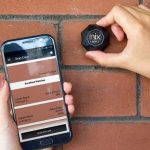Alex Brandon/AP Photo
- An average person with the coronavirus infects about two others, but sometimes an individual passes the virus to far more people in a “superspreader event.”
- Most of these events are similar: An infected person attends a gathering with lots of people, like a religious service, choir practice, or party.
- The recent Supreme Court nomination ceremony for Judge Amy Coney Barrett may have been one such event.
- More than a dozen people White House staff members GOP officials have tested positive for COVID-19 since that gathering.
- Visit Business Insider’s homepage for more stories.
More than 150 people gathered in the Rose Garden of the White House on September 26 to see President Donald Trump officially nominate Judge Amy Coney Barrett to the Supreme Court. Most were maskless. Many hugged or shook hands as they mingled in close proximity.
Then some attendees — including Trump and Barrett — celebrated inside the White House.
Within five days, President Trump and the First Lady had been diagnosed with COVID-19. The outbreak has hit more than a dozen White House staff members and GOP officials.
The infection timelines of those who’ve gotten sick — and their schedules in the week preceding the diagnoses — point to the nomination ceremony as a likely superspreader event. The term refers to a circumstance in which one person infects a disproportionately large number of others. Most often, that happens during a large gathering.
“It makes perfect sense why it would’ve spread there,” David Battinelli, chief medical officer at Northwell Health and professor of medicine at Hofstra University, told Business Insider, adding, “there were people in close contact with someone highly contagious with the disease who were invariably not paying attention to distancing, hand hygiene, or masking.”
Alex Brandon/AP
Superspreader events are the primary way the coronavirus spreads, research suggests. A September study from epidemiologists in Hong Kong found that just 20% of cases led to 80% of all coronavirus transmission.
Why the Rose Garden ceremony was probably a superspreader event
Chip Somodevilla/Getty
So far, at least a dozen people who attended the Rose Garden nomination ceremony have tested positive for COVID-19. They include President Trump and Melania, White House press secretary Kayleigh McEnany; Rev. John Jenkins, president of Notre Dame University; Senators Mike Lee of Utah and and Thom Tillis of North Carolina; Former New Jersey Gov. Chris Christie; former Trump adviser Kellyanne Conway; Pastor Greg Laurie; assistant press secretaries Chad Gilmartin and Karoline Leavitt; and journalist Al Drago.
On average, it takes about four to five days after getting infected with the virus to show symptoms, but the incubation period can be anywhere from two to 14 days, according to the CDC. Trump tested positive five days after the Barrett event, with many other officials announcing positive tests soon after.
Given the timing and risks associated with the ceremony, it’s very likely the event that sparked the White House cluster of cases. Who patient zero was there, however, is still unknown.
Defining a superspreader
The term superspreader refers to an infected person who transmits the virus to more people than the average patient does. For the coronavirus, that average number, known as R0 (pronounced “R-naught”), so far seems to hover between 2 and 2.5. So anyone who passes the virus to three people or more could be considered a superspreader.
A superspreader event, then, is a set of circumstances that facilitates excessive transmission. In one well-known example, a person transmitted the virus to 52 others during a choir practice in Mt. Vernon, Washington, in March. A superspreader event in Arkansas the same month, meanwhile, involved a pastor and his wife who attended church events a few days before they developed coronavirus symptoms. Of the 92 people they came into contact with, 35 got sick. Seven had to be hospitalized, and three died.
Reuters
In that sense, it’s not so much individual people who are innate “superspreaders” — it’s a type of activity that enables them to pass the virus to lots of people.
Those activities generally involve large gatherings, most often indoors, in which lots of people from different households come into close, extended contact, such as religious services or parties. Research has found the risk of coronavirus transmission to be highest indoors in poorly ventilated spaces.
“You can’t have a superspreading event unless there are a lot of people around, so you have to be very careful still about gatherings of people of any size,” William Schaffner, an infectious-disease expert at Vanderbilt University, previously told Business Insider.
That’s why offices and restaurants can be hot spots; a study of an outbreak in a South Korean call center showed that almost half the employees on one floor got infected. Nearly all of them sat in the same section.
The Rose Garden event was mostly outside, but that didn’t mean it wasn’t high-risk, according to Linsey Marr, a coronavirus aerosols researcher at Virginia Tech.
“Certainly parts of it were indoors — that would be more conducive to spread a transmission. But from looking at the pictures outdoors, people were seated very close to each other, not wearing masks for an extended period of time,” Marr said. “So I don’t think we can rule out transmission occurring outdoors in this case also.”
OLIVIER DOULIERY/AFP via Getty Images
Superspreading events account for most coronavirus transmission
Superspreader events account for most new coronavirus infections worldwide. A recent preliminary report published in the CDC journal Emerging Infectious Diseases found that of 3,184 confirmed cases of COVID-19 in Japan, at least 61% could be traced to 61 large clusters traced to group settings like bars, restaurants, and offices.
The Hong Kong research on transmission found that 70% of people with COVID-19 didn’t pass the virus to anyone else at all. The rest accounted for the entirety of the virus’ spread in the study.
“Superspreading events are happening more than we expected, more than what could be explained by chance,” Ben Cowling, one of the study’s coauthors, previously told Business Insider. “The frequency of superspreading is beyond what we could have imagined.”
Cowling added: “If we could stop the superspreading from happening, we’d benefit the most people.”
Powered by WPeMatico





